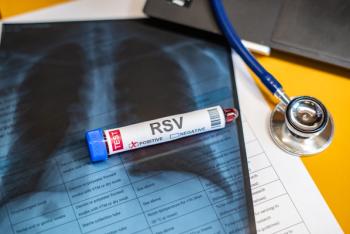
Real-World Data Key to Optimizing CAR T-Cell Therapy Delivery, Outcomes
Key Takeaways
- CAR T-cell therapies are individualized treatments approved for multiple hematologic malignancies, with improved management of adverse effects over time.
- Access to CAR T-cell therapies is limited by geographic and socioeconomic disparities, with most treatments delivered in FACT-accredited centers.
Experts at AMCP Nexus 2025 highlighted how real-world data can improve CAR T-cell therapy access and outcomes.
Experts highlighted how real-world data on chimeric antigen receptor (CAR) T-cell therapies can help payers and providers enhance outcomes, streamline care, and expand
The Tuesday afternoon session, “Creating Sustainable Solutions for Enhancing CAR T-Cell Therapy Access: Technology and Site of Care Solutions to Improve Outcomes and Reduce Health Disparities,” featured insights from Andy Berg, PharmD, of Audaire Health; Chester B. Good, MD, MPH, of
Understanding CAR T-Cell Therapies
O’Brien provided an overview of CAR T-cell therapies, describing them as “individualized, living therapies created from a patient’s cells in real time” that harness the immune system to engineer T cells to recognize and attack cancer cells.
Seven CAR T-cell therapies have
These therapies are approved for the following hematologic malignancies: B-cell acute lymphoblastic leukemia, large B-cell lymphoma, diffuse large B-cell lymphoma, follicular lymphoma, mantle cell lymphoma, small lymphocytic lymphoma, chronic lymphocytic leukemia, and multiple myeloma.
O’Brien noted that early use was limited by life-threatening adverse effects, such as cytokine release syndrome and neurotoxicity, prompting the FDA to restrict administration to specially certified centers. Many payers also required certification by the Foundation for the Accreditation of Cellular Therapy (FACT). Over time, he highlighted that adverse events have become less severe, allowing modest site-of-care expansion and the FDA to eliminate Risk Evaluation and Mitigation Strategies for approved therapies.
“That’s another example of where we’ve come in a fairly short amount of time in terms of getting comfortable managing the adverse events related to CAR T, and that’s another reason why you’ll see this need to expand access," O’Brien said. "The institutions, prescribers, and hospitals have really learned best practices to be able to proactively manage these adverse events."
Still, most CAR T-cell therapies are delivered in FACT-accredited centers, 85% of which reported near full capacity. O’Brien added that living more than 25 miles from an accredited center reduces the likelihood of receiving CAR T therapy by 47%, highlighting geographic and socioeconomic disparities in access.
Real-World Insights From UPMC
Good followed up by sharing real-world insights from UPMC, noting a steady rise in patients authorized for and receiving CAR T therapy. Patients today are generally less heavily pretreated, reflecting expanded indications into earlier lines of care. He noted that this is also due to outlying sites becoming more familiar with early referrals, supported by educational outreach to community oncologists.
“My oncologist said that the T cells are more fit and the patients do better,” he said.
Although the total number of CAR T procedures continues to rise, most patients remain at the hospital. UPMC is developing processes to expand outpatient delivery, though Good highlighted that hospitalization often remains necessary. Additional barriers to CAR T-cell treatment include patients declining travel to Pittsburgh for consultations, lack of caregiver or home support, financial burdens from temporary relocation for treatment, and the complexity of care navigation.
Health Plan Challenges and Barriers to CAR T-Cell Therapy
Building on Good's claims, Steadman summarized the challenges associated with CAR T-cell therapies from a health plan perspective, including high treatment costs, limited insurance coverage, and insufficient Medicare Part B reimbursement. Although alternative reimbursement models and outpatient treatments could lower costs, he noted that these are not yet widely implemented.
Social and structural determinants like race, income, and education further limit access to vulnerable populations, as Steadman noted that only a fraction of eligible patients with serious conditions, often in wealthy and urban groups, receive CAR T-cell therapy. Restrictive insurance criteria and unclear decision processes exacerbate these disparities.
Leveraging Real-World Data to Optimize CAR T-Cell Therapy Delivery
From a payer perspective, Berg emphasized that real-world data on CAR T-cell therapies can help address the challenges highlighted by his fellow panelists, arguing that better data leads to improved decisions and outcomes. At the patient level, he is particularly interested in remission rates, durability of response, and treatment outcomes.
At the provider level, he focuses on network performance, differences between high- and low-performing sites, and value optimization to support contracting and network design. Berg explained that payers can use this data to refine utilization criteria and, when appropriate, reduce delays and step requirements.
For the network, data can reveal variations in outcomes across treatment centers, identify high-performing sites, and guide direct contracting with those centers. He noted that it can also improve access by flagging referral-to-treatment delays in real time, optimizing site-of-care pathways, and addressing treatment deserts through network expansion.
Steadman added that data and analytics can also help health plans overcome barriers by identifying gaps in CAR T-cell therapy access, improving patient referral coordination, and enhancing treatment planning. He noted that, with this data, predictive models can anticipate and reduce therapy costs, while real-time monitoring supports management of adverse effects. Lastly, health plans can tailor coverage policies using evidence-based data.
Steadman explained that the goal of a CAR T real-world data program is to improve treatment access, site performance, and therapy efficacy and safety while also streamlining the experience for patients, payers, and providers.
“Utilizing real-world data, technology, strategic solutions, and cross-departmental partnerships will help ensure equitable access, so the right member receives the right drug at the right time and price, improving clinical outcomes and promoting cost-effective care,” Steadman said.
To launch a real-world data program, Berg recommended that payers first define their goals, then select priority end points and collection intervals. Next, they should choose a collection medium, develop clear messaging, and finally implement and scale the program.
“The most important thing you can do is start,” Berg concluded. “We can’t let perfect be the enemy of the good. The first thing you can do is start collecting so that we can start learning.”
References
- Berg A, Good CB, Steadman R, O’Brien R. Creating sustainable solutions for enhancing CAR T-cell therapy access: technology and site of care solutions to improve outcomes and reduce health disparities; October 27-30, 2025; National Harbor, MD.
- Approved cellular and gene therapy products. FDA. August 15, 2025. Accessed October 29, 2025.
https://www.fda.gov/vaccines-blood-biologics/cellular-gene-therapy-products/approved-cellular-and-gene-therapy-products
Newsletter
Stay ahead of policy, cost, and value—subscribe to AJMC for expert insights at the intersection of clinical care and health economics.













































